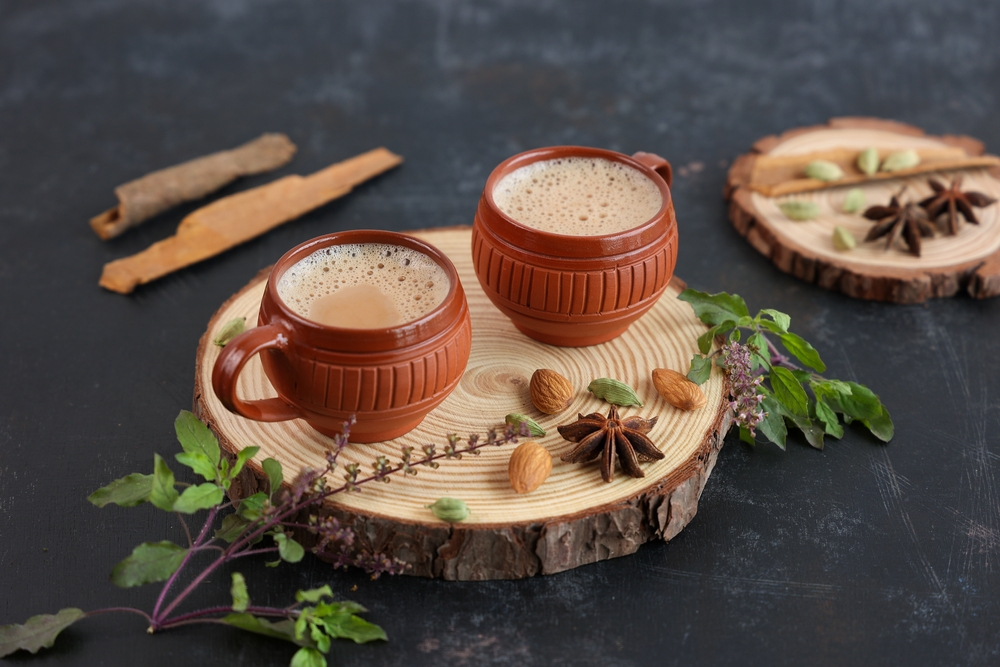The West is frequently quoted as receiving the best produce from India. Unfortunately, it usually turns out to be true, whether it’s the finest tea or saffron.
However, this generalisation is not always true. The one beverage that accomplished everything (and does not give credit to the British or Chinese for its invention) is masala chai. Like the CTCs (Cut, tear, curl), the idea that made tea not only affordable but also transformed a whole generation (and generations following) into ceremonial tea drinkers.
The origins of the “chai” you can get in almost any tea shop today go back thousands of years. Masala chai, or “spiced tea,” has a rich history that includes fables about royalty and natural remedies. It has innumerable varieties and a huge following thanks to thousands of years of evolution
What is Masala Chai?
The British set up tea fields in Assam, India, around 1835. There, black teas were cultivated, and native masala chai recipes used them. This was the first instance of masala chai as it is currently made with tea, milk, spices, and sugar. Due to the fact that tea was predominantly an export and was too expensive for most Indians, this combination didn’t have much of a following among the masses.
In India, fresh ginger and freshly ground spices are used to make masala chai from scratch. It is rarely created from scratch outside of the U.S., but it is commonly accessible as a syrup concentrate—often seen in coffee shops—and as a tea “blend” with dried spices.
The ancient story of Masala Chai
In ancient India, anything that had herbs and could be prepared, much like the traditional kada, was referred to as chai rather than the tea we use today. Although, there are more factors besides just brewing time that distinguishes chai from kada.
The history of masala chai is dated back to a royal court thousands of years ago. It was supposedly created 9,000 years ago, according to certain stories, while 5,000 years ago, according to others. According to some legends, the court was situated in what is now India. In any case, it is purported that a king invented it as an energising, ayurvedic beverage.
Early on, a variety of spices and cooking techniques were used to create masala chai. It was used as a treatment for minor illnesses and was offered hot or cold. At the time, the spicy-sweet beverage was devoid of caffeine and did not include any tea leaves.
Popularity among Indians
The British-owned Indian Tea Association started encouraging the consumption of Indian tea in India in the early 1900s. Vendors added milk, sugar, and spices to keep their beverages tasty while keeping costs low because black tea was the most expensive component. The appeal of masala chai increased.
Masala chai gained popularity in India in the 1960s as a result of mechanised tea production that made black tea more affordable for the general populace. The nuanced flavours that many people seek in a plain cup of tea are absent from CTC (Cut, tear, curl) tea. But it does have a strong, tannic flavour that gave it a delightful contrast to the sweet, creamy, and spicy notes of masala chai. Because of this, CTC masala chai is still widely consumed throughout India.
Chai wallahs, or “tea persons” is the regional term for street and train vendors who sell tea—serve masala chai to the general public. These stations quickly developed into gathering places where weary visitors might unwind for a while and mingle with the locals. Chai is frequently served to guests as a form of greeting.
The History of Masala Chai is such that it is now a mainstay of Indian culture and is drunk by billions of people worldwide. Masala chai is a beverage that is unique to each region of India. No masala chai is the same, from the pink noon chai in Kashmir to the 6-spice chai in Gujarat.
People in some places consume four small cups of chai on average each day. Around 4 p.m., while having an afternoon snack, is a popular time for drinking chai. Savoury snacks like samosas, pakoras, and farsan could be included in this snack.

